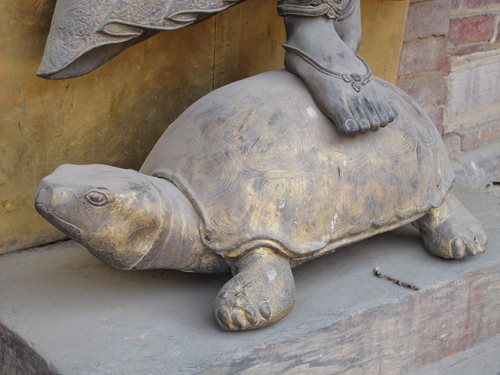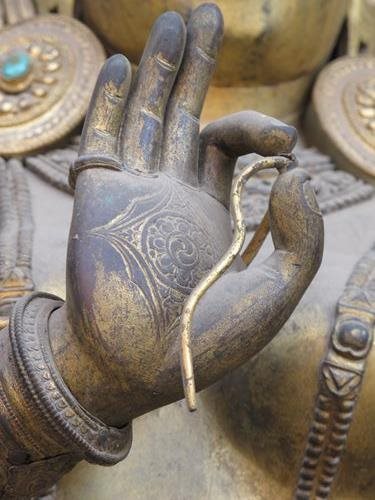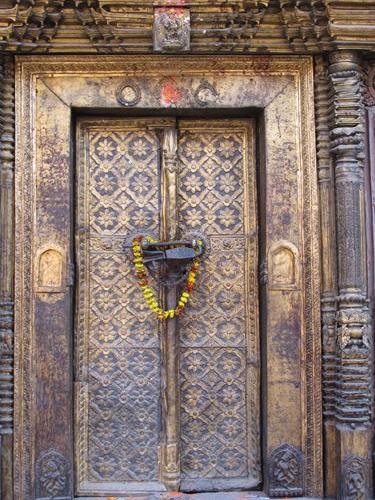We are privileged to be able to rent a spacious flat in southern Kathmandu. Our landlady – who lives in Singapore – has the ground floor and we inhabit the top floors, and have a choice of four bathrooms. From the second floor terrace, when the air is clear, we can see out West to the Chandragiri cable-car and the Hattibhan ridges which form the 2000m-high rim of the Valley and also North to the eternal snows of Ganesh
himal and Langtang.
For the last week or so though the visibility has been so very poor we could be living in the flatlands and we couldn’t see any of the surrounding hills. The Valley is a huge basin which should be an idyll. The land is fertile, the climate mild and we’re protected from Himalayan storms but the population has grown mainly fed by immigration from the Hills; employment opportunities are good here, and as standards of living have improved, so have aspirations and the ability to buy vehicles. The population of humans in the Valley is probably around four million with much of the agricultural land sacrificed to concrete and almost everyone in employment seems to own a vehicle. It feels like there must be a million small motorbikes in the Valley; many carry entire families sandwiched between the adults.
Roads are poorly maintained and building continues apace too there are trucks everywhere – transporting materials, and drinking waters because our taps are dry.
So the air quality is poor. Our flat is a few hundred metres from the house we rented some two decades ago and in those days out garden was visited by innumerable birds. Now the dawn chorus is of crows
shouting their Nepali name
kaag kaag, motorbikes being tortured, gates clanging, cockerels crowing, neighbours shovelling cement, hammering, circular saws, dogs barking, machines sanding brickwork, the twanging of a man offering to fluff up cotton quilts or pillows, someone sweeping, squawking parakeets and guys with bicycles piled high with vegetables shouting
peeaz-lasooon-dhania-cauli-alooooo. Mostly the sounds of nature are drowned out by human activity and only occasionally now do I tune into the cheerful chattering of bulbuls and the sounds of squabbling minahs. There aren’t many tailor birds any more, pied robins are few and egrets only fly over now on their commute to some surviving scrap of pond-water. Kathmandu isn’t a pretty place these days, and, sad to say, there is no political will to do anything about it.
 |
| For those at the bottom of the heap, life in Nepal is particularly tough |
 |
| But the religious art is exquisite - this is in Patan Durbar |
 |
| And there are splashes of colour everywhere |